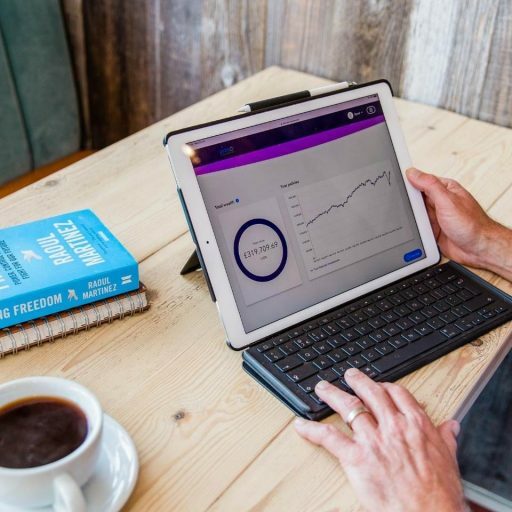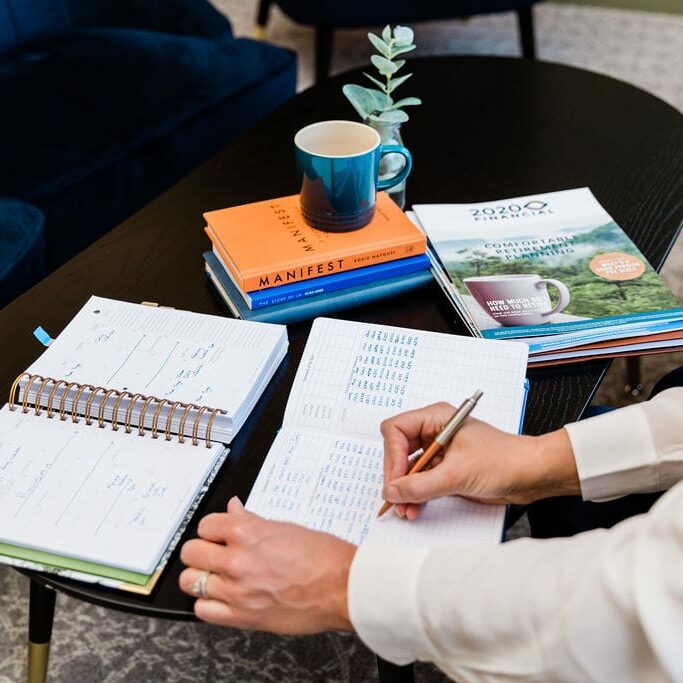Pension drawdown, like any long-term financial planning and management, is a complex subject, freight with potential risk, and with more people opting to enter pension drawdown; clear guidance is needed.
Before April 2015, most people with Defined Contribution pensions were required to buy an annuity—a form of guaranteed income, but since the introduction of pension freedoms, the flexibility of Pension drawdown has been attracting growing numbers of people. In fact, the number of people entering pension drawdown grew 24% in 2021/22 versus 2020/21.
Many people are approaching pension drawdown with little knowledge or guidance to help them, in this guide, we aim to arm you with the essential knowledge to help you navigate pension drawdown.
What is Pension Drawdown?
Pension drawdown is a flexible way of accessing your defined contribution pension from age 55. It allows you to access your pension in a number of ways, including:
- taking a regular income in retirement, or
- taking one-off cash lump sums from your pension over time
Pension drawdown lets you use your pension pot to enjoy a regular retirement income.
With Flexi-access drawdown, you can also blend tax-free cash with taxable withdrawals and keep the rest of your pension invested whilst you’re taking an income. And you can still work and take your pension at the same time.
How pension drawdown works
When you set up a flexi-access drawdown, you can choose how much you want to withdraw from your pension pot. You can withdraw up to 25% of your pension tax-free, and the rest will be used to provide you with an income. This flexible income can be taken in regular payments or occasional lump sums – you don’t have to start taking your pension at the same time as accessing your tax-free cash.
There are no limits on the amount you can withdraw and the frequency of your income withdrawals once you reach 55 (moving to 57), but remember, you are responsible for managing your drawdown pension pot. It has to last you through retirement; once it’s gone, it’s gone, so it’s important to get expert advice.
Is pension drawdown a good idea?
Pension drawdown isn’t for everyone; it’s crucial that you have the plans in place and the know-how to ensure your money actually lasts.
Because once it’s gone, it’s gone. Unlike an annuity or a Defined Benefit Pension, a drawdown pension is not guaranteed for life. So, you will need to manage your money meticulously to make sure it doesn’t disappear.
However, get it right and pension drawdown has some pretty impressive benefits:
- It’s flexible – you can take more when you need it and less when you don’t
- It allows you to manage your withdrawals tax-efficiently
- You may be able to defer paying Life Allowance tax until you are 75
- You can pass any leftover money onto beneficiaries, fully free of inheritance tax
When planning for pension drawdown, you will want to consider the impact on your income if you:
- Live longer than you have planned for
- Withdraw too much money in the early years of retirement
- Invest in funds that don’t perform as well as you had anticipated
A Financial Advisor can help you navigate these forks in the road and will build it into your overall investment strategy.
The risks of Pension Drawdown
Drawdown can give you greater flexibility over how you access your pension savings. It can also provide you with a regular income because you can adjust how much you take and when it can allow you to access your pension pot tax-efficiently. However, drawdown does come with some risks:
- Standard investment risk – The investments you choose can go down as well as up, so you could get back less than you originally invested.
- Risk your money could be inappropriately invested – Taking too little, or too much risk with your investments can impact your investment performance, affect your ability to meet your financial goals and threaten your long-term financial health. There’s also the risk of unregulated investments that might promise high returns but often don’t deliver.
- Taking too much from your pension pot and running out of money. Pension drawdown does not guarantee income for life, your pension pot is finite, and if you take too much (especially early in your retirement), you can deplete your retirement savings and run out of money.
- Longevity Risk – Outliving your pension pot – Living a long life might be a dream for most, but living to 100 or beyond means your retirement cash has to go much further than you might have originally planned.
Longevity Risk Example
The average life expectancy for a 46-year-old male in the UK is 84 years (Source: ONS longevity calculator), but there’s a 1-in-4 chance of them living to 93 and a 4.9% chance of living to 100.
The 16-year difference between the average and above-average life expectancy could have substantial financial implications, especially for someone in Pension Drawdown. So it’s essential to review and manage your pension pot and finances throughout your retirement to ensure your finances stay on track.
Accessing your tax-free cash
When you set up a flexi-access drawdown, you can access up to 25% of your pension pot tax-free, either as a tax-free lump sum or taken in different ways. As retirement planning specialists, we can help you understand if this is in your best interests and use advanced cash flow modelling to show you the potential impact on your pension pot value and future retirement income.
We can also help you understand your options for accessing your tax-free cash, including managing your tax-free withdrawals to provide a blended income for maximum tax efficiency.
How much should you draw down from a pension?
Because there are no limits to how much you can draw down from your pension pot, and it can run out, it’s essential to manage your pension pot withdrawals sustainably.
Pension drawdown works by keeping your pension invested with the returns helping to maintain or manage the value of your pot over the length of your retirement. If you take withdraw too much money, especially early in your retirement or when the markets are down, you can deplete your pension pot, leaving you without enough capital investment to provide you with the returns you need.
The amount you should draw down will depend on your individual circumstances. But as a general rule, taking 4% of your pension pot per year is considered a safe withdrawal rate, although this depends on a number of key factors.
What’s a safe withdrawal rate
When we refer to ‘safe withdrawal rates’, this is the amount that you can comfortably take out of your pension every year, while still protecting a big enough portion of your pension pot to grow at a similar rate to your withdrawals.
Essentially, the aim is to stop your fund from depleting too quickly; this could ultimately lead to you running out of money during your retirement and finding yourself in a tricky, far-from-ideal situation.
Although 4% is a good rate to keep in mind, what a safe drawdown rate looks like for you will depend entirely on
- your investment risk tolerance
- how your personal investments perform over time
- how long you need your money to last and
- your financial aspirations and goals
Any withdrawals need to be aligned with your investment returns. This is an area our team of experts can help you figure out; it’s an area of retirement planning where we excel.
The 4% withdrawal suggestion is a general rule we discuss with our clients. It’s a sensible withdrawal amount that leaves you margin for times of market volatility. But it’s not a hard and fast rule, some clients are happy to take more if they don’t mind a bit of capital erosion.
There isn’t a one-size fits all approach. We have clients who want to take as much as possible from their pension AND maintain the value of their pension pot to pass onto their kids, others are happy to spend their money more freely and aren’t so concerned with the value of their estate.
Simon Garber, Independent Financial Advisor, 2020 Financial
N.B. Remember, the amount you can safely withdraw from your pension also depends on how your pension is invested; if your funds are held in very low-risk assets, even a withdrawal of 4% can lead to erosion of your pot.
Further Reading: How much can I draw down from my pension pot
Pension drawdown calculator
It’s impossible to predict exactly how your pension pot with last, but Pension Drawdown Calculators can show you what will happen to your pension pot at varying withdrawal levels and with different investment strategies.
Our drawdown calculator is a fun retirement planning tool that shows you
- how long your drawdown pension might last
- how much income you could afford to take from your drawdown fund and
- how different investment strategies might affect your pension pot value over time.
The calculator uses over 100 years of stock market data to model potential outcomes.
Try the pension drawdown calculator today.
Looking for a bespoke solution? We offer our clients comprehensive retirement planning and cash flow modelling as part of our tailored service – contact us to learn more.
How much does pension drawdown cost?
The cost of setting up a flexi-access drawdown can vary, depending on the provider and the type of service you require. You’ll also have investment and platform charges and potentially management charges.
Your independent financial advisor can help you to find the best deal for you, and they’ll also be able to assess whether the potential returns justify the costs involved.
What if my existing pension provider does not offer drawdown
Some older pension schemes don’t offer drawdown as an option; if this is the case, we can advise if moving or transferring your pension into a different scheme is appropriate.
If you have a Defined Benefit Pension, it is vital to understand that these offer valuable guaranteed income for life. These schemes’ benefits can rarely be matched in a drawdown arrangement. You can access more information about Defined Benefit pension schemes here.
Combining pension pots for drawdown
It isn’t uncommon to have multiple pension pots, especially if you have moved around with different employers, all with their own workplace pensions. If you’re considering pension drawdown, you might find it easier to have all your pensions in one place.
As with most financial decisions, there can be pros and cons to combining your pensions. As long as you’re not giving up valuable benefits, it can make a lot of sense to manage your pensions in one place, especially if you’re moving them to a Self Invested Personal Pension (SIPP).
Some of the benefits include:
- Convenience
- Greater investment choice and control
- Flexibility to access drawdown
- Potential to save on fees
- Potential to access better-performing investment fund
- Leaving an Inheritance*
*It’s worth noting that Defined Contribution Pensions and SIPPs can usually be passed on free of Inheritance tax to named beneficiaries. The fewer pension pots you have, the fewer pension scheme trustees you’ll need to keep updated of address changes, and beneficiary changes, and it will be easier to manage. Find out more about the benefits and risks of transferring multiple pensions.
Drawdown FAQs
How much can I draw down from my pension?
While it is possible to draw everything out of your pension, it isn’t a good idea. You will end up paying tax (at the highest rate) on 75% of your pension, meaning you will lose a substantial amount of your hard-earned investment to the tax man.
You can, however, take out 25% as a tax-free lump sum and then re-invest the rest into funds designed to provide you with a regular taxable income. You set the income you want, although this might be adjusted periodically depending on the performance of your investments or changes to your lifestyle.
How can I avoid paying tax on my pension drawdown?
Pensions are taxable at your marginal rate of income tax, which means that you can use your personal tax allowance every year to access your pension without paying tax on it.
You can also access 25% of your pension pot tax-free. It’s also possible to blend tax-free cash from your pension and use your personal tax allowance to access even more of your pension tax-free.
Is it better to take a monthly pension or lump sum?
A pension is a tax-efficient savings vehicle – one of the best around – but once you take your money out of your pension, you start incurring tax on your withdrawals.
If you don’t need to access your pension, then you’re better off leaving it invested and taking it as monthly income (rather than taking it out as a lump sum).
If you do decide to take your pension as a lump sum:
-The first 25% is tax free, but you’ll pay income tax on the rest at your highest rate
-You could be liable for other taxes if you reinvest your money elsewhere (i.e. capital gains)
– Your family could become liable for Inheritance tax at 40% if you die
What happens to a drawdown pension when you die?
A considerable benefit of a drawdown pension is that it allows you to pass money on to any named beneficiary/s after you die, usually free of inheritance tax. Depending on how old you are when you die, it could be free of income tax too.
It’s pretty straightforward: you need to request and submit a ‘nomination of beneficiaries’ form to your pension provider and when you die, your beneficiaries will need to provide them with a copy of your death certificate.
If you have several pension providers, you will have to do this with each of them.
Get Pension drawdown advice.
The key to getting the most out of pension drawdown is careful, precise management. After all, the last thing you want when you’re trying to revel in your golden years is to wake up one day to an empty pension pot.
A few of the most common risks of pension drawdown include:
- Taking too much out of your pension pot on too frequent a basis
- Withdrawing too much as a lump sum early on in your retirement
- Not managing your money tax-efficiently
- An appetite for risk that sits on either end of the spectrum… too much or too little!
Rest assured, with the right support and strategy; these risks can be easily avoided.
We’re here to help you discover what financial freedom means to you. We’ll work with you – as part of a trusted partnership – to map out how we can get you from where you are to where you want to be.
Schedule a call with one of our team today.



